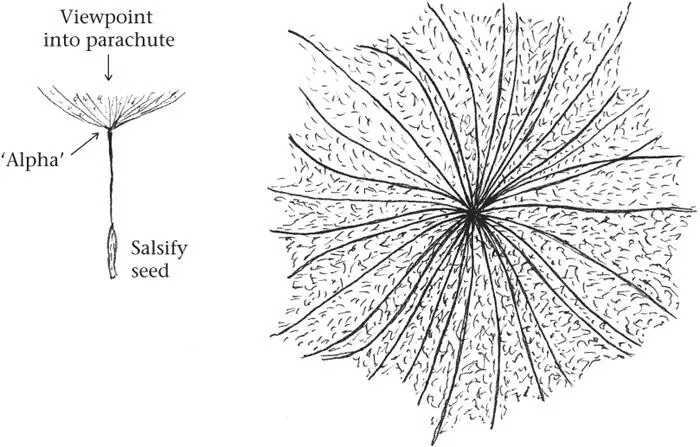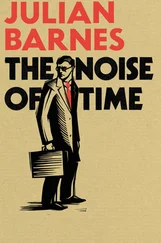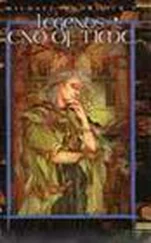Platonia is vast. Size alone is insufficient to convey its vastness. Triangle Land already has three dimensions, and stretches out to infinity from its apex and frontiers. That reflects the already huge number of ways in which three objects can be arranged in space. As the number of objects is increased, the number of ways in which they can be arranged increases incredibly fast. The numbers one encounters in astronomy are as nothing compared with the number of possible arrangements of large numbers of objects. The instants of time are numberless. And each is different.
There is a saying about time, apparently first expressed in a piece of graffiti and much loved by John Wheeler, that seems apt here: ‘Time is nature’s way of preventing everything from happening all at once.’ In a timeless world, verbs of becoming like ‘happen’ have no place. But if Nows are both concrete and distinct, it is a logical contradiction to suppose that they could ‘happen at once’, i.e. be superimposed on one another. I believe that the aphorism expresses a profound truth.
Developing the ‘Platonic’ theme, I conjecture that the actual universe in which we find ourselves corresponds to some Platonia. We have not yet fully grasped the structure of its points, its Nows. Perhaps we never shall, but I assume that in any instant what we experience, including the appearance of motion, is a transmuted representation of a part of one such Now. This is not far removed from Plato’s original idea that we mortals are like beings confined from birth to a cave, and that all we ever comprehend of the outside world and the real beings in it are the shadows they cast on the wall of our cave as they pass its entrance. I also think that Plato was right when he said that Being (one of his forms, one of my instants of time) is real, but that Becoming is an illusion. However, I go further than Plato in attributing the illusion of Becoming to something that is real – a special time-capsule structure of Nows. The illusion of Becoming has its basis in real structure in special Being.
Platonia is the arena that I think must replace space and time. Why this should be so, how it can be done, and what physics in Platonia is like is the meat of the book. But it is already possible to see how differently creation and a supposed beginning of time appear in Platonia. Most people are baffled that time could begin. How many times do we hear the question, ‘But what happened before the Big Bang?’ The question reveals the depth to which the notion of an eternally flowing time is ingrained in the psyche. This is why I call the instants of time ‘things’, so as to break the spell, and why I have chosen the name Platonia for our home. It is also why I use paths as the image of history. In itself, there are no paths in Platonia, just as there were no paths on Earth before animals made them. The points of Platonia – the Nows – are worlds unto themselves. No thread of time joins them up. We must think of Newtonian-type dynamics as something that ‘paints a path’ onto the timeless landscape of Platonia.
Once the instinctive notion of time is expunged, it is easy to see that history, as a path in Platonia, can certainly start or end. The path to Land’s End does terminate there: only the sea lies beyond. Triangle Land has a point like Land’s End: it is the apex of the pyramid, which in Figure 4 I called Alpha. Beyond it is nothing, not even sea. Looking for time before the Big Bang is like looking for Cornwall in the Irish Sea. If we think that time exists and increases or decreases along a path in Triangle Land that terminates at that apex, then we can see that time will certainly begin or end at that point. I think this is how we should think about the Big Bang. It is not in the past, it is at a kind of Land’s End.
All Platonias seem by necessity to possess a distinguished point like the apex of Triangle Land. This is why I call it Alpha. It is suggestive that Platonia has an Alpha but no Omega: there is no limit to the size or complexity of things that can exist. Triangle Land opens out from Alpha to infinity, as do all Platonias. To underline this fact, Figure 5 is my own attempt to give a somewhat more artistic and simultaneously realistic representation of the actual Platonia of our universe, which of necessity is vastly more richly structured than Triangle Land.
Now we must begin to consider how the notion of Platonia will change the way we think about such seemingly simple things as motion. How can it emerge from a scheme without a vestige of time? Is motion really a pure illusion? If we were in London yesterday and New York today, we must have moved. Motion must exist. Let me persuade you that it does not.
IS MOTION REAL?
We had a cat called Lucy, who was a phenomenal hunter. She could catch swifts in flight, leaping two metres into the air. She was seen in the act twice, and must have caught other victims since several times we found just the outermost wing feathers of swifts by the back door. Faced with facts like this, isn’t it ridiculous to claim there is no motion?
The argument seems decisive because we instinctively feel that Lucy has (or, rather had, since sadly she was killed by a car) some unchanging identity. But is the cat that leaps the cat that lands? Except for the changes in her body shape, we do not notice any difference. However, if we could look closely we might begin to have doubts. The number of atoms in even the tiniest thing we can see is huge, and they are in a constant state of flux. Because large numbers play a vital role in my arguments, I shall give two illustrations. Have you ever tried to form a picture of the number of atoms in a pea?

Figure 5.Triangle Land is like an inverted pyramid, with frontiers formed by special triangles as explained in Figure 4. Platonias corresponding to configurations of more than three particles have not only frontiers but also analogous internal topographic features. This illustration, based on the parachute of a salsify seed (shown life-size on left) from my wife’s garden, is an attempt to give some idea of the rich structure of the frontiers of Platonia. No attempt is made to represent the even richer internal structure. Platonia’s Alpha is where the ribs converge. Because Platonia has no Omega, the salsify ribs should extend out from Alpha for ever. (The wind carries the actual seeds rather efficiently into our neighbours’ gardens, where the progeny flourish, but they are not always welcome, although salsify is an excellent vegetable.)
Imagine a row of dots a millimetre apart and a metre long. That will be one thousand dots (10 3). (Actually, it will be 1001, but let us forget the last 1.) One thousand such rows next to one another, also a millimetre apart, gives a square metre of dots, one million (10 6) in total. The number of dots in one or two squares like that is about the number of pounds or dollars ordinary mortals like me can hope to earn in a lifetime. Now stack one thousand such squares into a cube a metre high. That is already a billion (10 9). So it is surprisingly easy to visualize a billion. Five such cubes are about the world’s human population. Yet we are nowhere remotely near the number of atoms in a pea.
We shall keep trying. We make another cube of these cubes. One thousand of them stretched out a kilometre long takes us up to a trillion (10 12). A square kilometre of them will be 10 15(about the number of cells in the human body), and if we pile them a kilometre high we get to 10 18. We still have a long way to go. Make another row of one thousand of these kilometre cubes, and we get to 10 21. Finally, make that into a square, one thousand kilometres by one thousand kilometres and a kilometre high – it would comfortably cover the entire British Isles to that height. At last we are there: the number of dots we now have (10 24) is around the number of atoms in a pea. To get the number in a child’s body, we should have to go up to a cube a thousand kilometres high. It hardly bears thinking about.
Читать дальше













